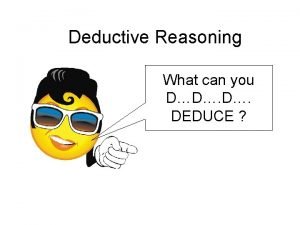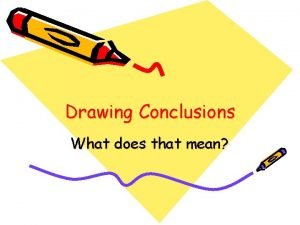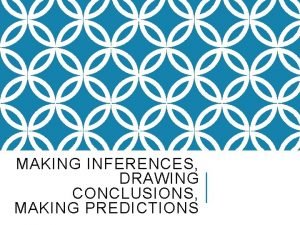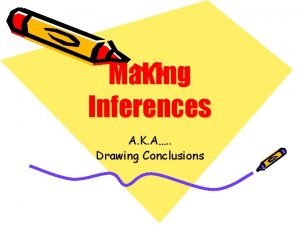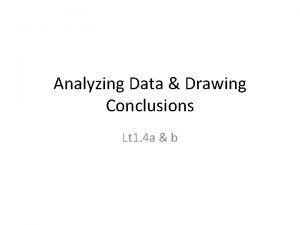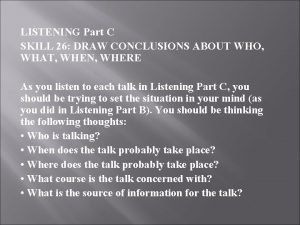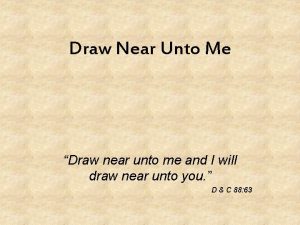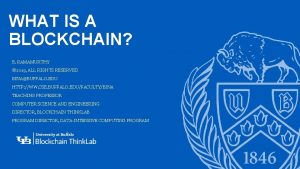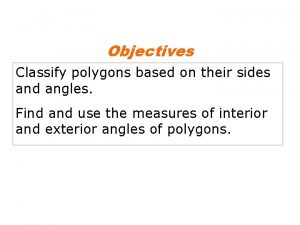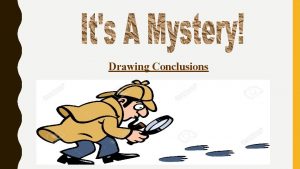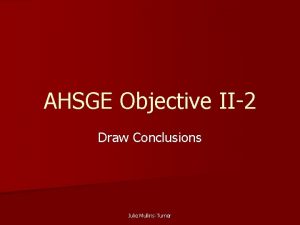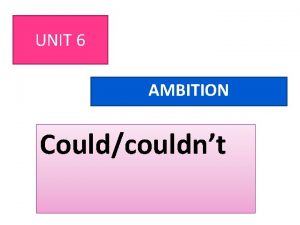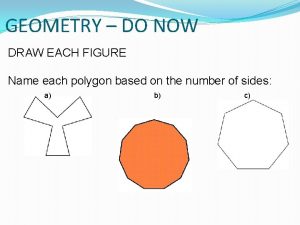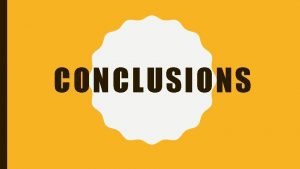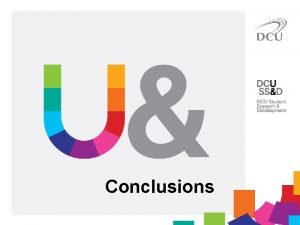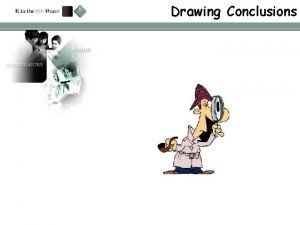What conclusions could we draw from each of













- Slides: 13

What conclusions could we draw from each of these photos? What might we be learning about today?

The Teleological Argument • I can explain St Thomas Aquinas’ Fifth Way concept of governance; archer and arrow analogy. • I can explain William Paley’s watchmaker - analogy of complex design.

The Teleological Argument • Argues that the world is so complex that it must have been designed. • What is another name for this argument? • What type of argument is this and why? The design argument (telos means ‘end’, or ‘purpose’) • A posteriori – based on sense experience • Inductive proof – constructed on evidence; conclusion is possible

Aquinas’ Fifth Way: ‘from the governance of things’ • “Hence it is plain that they achieve their end, not fortuitously, but designedly. Now whatever lacks knowledge cannot move towards an end, unless it be directed by some being endowed with knowledge and intelligence; as the arrow is directed by the archer. Therefore some intelligent being exists by whom all natural things are directed to their end; and this being we call God. ” • Aquinas, writing in Summa Theologica

Aquinas’ Fifth Way: ‘from the governance of things’ (concept of governance; archer and arrow analogy) • Everything works for a particular purpose / end through following natural laws • Inanimate objects / things which lack knowledge cannot move themselves towards their end (arrow) • Inanimate objects / things which lack knowledge must be directed to this purpose by some external power • This external power must be God (the ‘intelligent being’)

William Paley’s watchmaker analogy of complex design. https: //www. youtube. com/watch? v=foe. M 6 v. XZCys • Why did William Paley argue that God must exist? • Draw a storyboard with 4 -5 boxes to summarise Paley’s argument, including his analogies. • Challenge: Read Jordan et al. and add to your notes.

Tennant’s Teleological Argument • F. R. Tennant’s anthropic and aesthetic arguments - the universe specifically designed for intelligent human life

The Anthropic Principle • A recent development of the teleological argument • F. R. Tennant develop this idea (although didn’t use the phrase) in Philosophical Theology (1930) • Anthropic: related to being human • Anthropic Principle: the cosmos is constructed for the development of intelligent life 1. Explain the Anthropic Principle in your own words, with examples. 2. What evidence did Tennant give for the AP? 3. Why isn’t evolution an argument against the Anthropic Principle? 4. Explain Tennant’s aesthetic principle in 3 – 5 bullet points. Challenge: To what extent do you agree with Tennant’s argument? How is it similar / different to Paley’s / Aquinas’?

The Anthropic Principle Explain the Anthropic Principle in your own words, with examples. the cosmos is constructed for the development of intelligent life – it is ‘finely tuned’ e. g. specific conditions on the Earth mean that water exists; gravity is perfect for our survival For us to be here, the world must be like this – if it were different, we could not survive What evidence did Tennant give for the AP? Writing in Philosophical Theology (1930) - The world can be analysed in a rational way – we can discover Laws of Nature - The world has given the basics for sustaining life - Evolution has resulted in intelligent human life: this is not random / coincidental – the ordered universe, subject to Laws of Nature, must be part of God’s plan Explain Tennant’s aesthetic principle in 3 – 5 bullet points. - The universe is beautiful – beauty is everywhere - Humans are able to appreciate this beauty - This is not necessary for our survival / natural selection - Beauty must be the work of a divine designer Here is a useful link: https: //thesiseleven. wordpress. com/philosophy/the-designargument/the-anthropic-principle/

‘The challenges to the teleological argument for God's existence are convincing. ’ Evaluate this view. (30) Introduction: Briefly introduces the concepts and sets out a line of argument. Toasted marshmallows: A clear and crisp outside Give my argument Sticky middle Evidence, logical chains of reasoning, scholars A clear and crisp outside Concise mini-conclusion / link back to the question Conclusion: Follows from your reasoning; concludes your argument. In this essay, I shall argue that… It could be argued that… This seems to suggest that… In support of this, *scholar* stated that… Furthermore However Despite…, it seems undeniable that…

AO 2 Checklist • • • critical analysis & evaluation relevant clear views, supported by detailed reasoning / evidence. views of scholars specialist language and vocabulary n. b. Swinburne – the fact that the universe is so complex means that it is much more probably that it was designed than that this order came about by chance. God is the simplest explanation for this,

‘The challenges to the teleological argument for God's existence are convincing. ’ Evaluate this view. (30) One challenge to the teleological argument is that natural selection and evolution explain the complexities of species in terms of natural and random processes, rather than being the work of God. Aquinas’s idea of purpose coming from God is therefore no longer relevant: as Dawkins argues, empirical evidence shows us that the DNA of each species explains its ‘purpose’. However, Tennant argues that evolution is itself evidence of divine design and that the complex workings of the universe as a whole must be the result of intelligence. Yet this argument relies on a pre-existent belief in God: the leap of faith is not convincing to an atheist. Indeed Dawkins went so far as to describe the notion of a divine designer as ‘superstitious nonsense’ since it has no empirical evidence. Furthermore, natural selection explains the existence of evil and suffering in the universe: a universe designed by the God of Classical Theism would not contain such flaws. Scientific explanations are therefore more acceptable alternatives to divine ‘intelligent’ design theories since they are based on evidence and successfully overcome philosophical challenges faced by those who claim that God is the designer.

‘The challenges to the teleological argument for God's existence are convincing. ’ Points from the Eduqas mark scheme Design is only apparent. The order that can be seen in the universe is not evidence of intention. Therefore, there is no need to conclude that this was the action of a designer God, thereby undermining claims for his existence. The suggestion that this argument is more of a God of ‘gaps’ argument rather than based on empirical evidential claims. As such, it is outdated and unnecessary in a rational scientific age. Supportive arguments against design from science – e. g. Darwin and his work on natural selection and evolution is contrary to the account in scripture of the universe and all that is in it being the deliberately designed result of God’s actions. Natural selection explains the problem of evil, (i. e. random suffering, animal suffering, etc. ) therefore it is a more acceptable alternative to divine ‘intelligent’ design theories, as it is based on empirical evidence not theological speculation. Candidates should consider the various counter arguments arising from Hume as being accepted as empirically sound (ineffective analogies; lack of experience; apparent not authentic design; no comparable universe) thereby providing a convincing challenge to the teleological argument. Alternatively, other views may include the fact that the teleological argument is based on observation of apparent design, order and purpose in the universe (a posteriori) i. e. a scientific method. In which case, the fundamentals of the argument are based on the same assumptions as that of scientific theories. Scientific theories are often in need of updating or proved to be false – therefore scientific evidence against the teleological argument does not necessarily prove an effective challenge. Contemporary scientists (e. g. Tennant) support the design concept. This shows that scientific evidence can be used to support as well as challenge the teleological argument. In which case, the strength of the argument may come down to a personal preference, negating the effectiveness of the challenges.
 The process of using logic to draw conclusions
The process of using logic to draw conclusions Draw a conclusion definition
Draw a conclusion definition Making inferences drawing conclusions
Making inferences drawing conclusions What is inference example
What is inference example Skill 18: anticipate the topics
Skill 18: anticipate the topics What conclusion can you draw out from the pie graph
What conclusion can you draw out from the pie graph Skill 4 draw conclusions about who what where
Skill 4 draw conclusions about who what where Draw near unto me and i will draw unto you
Draw near unto me and i will draw unto you How to draw use case diagram in draw.io
How to draw use case diagram in draw.io 3 ring bullet identification
3 ring bullet identification Draw and label a figure for each relationship
Draw and label a figure for each relationship Sum of angles decagon
Sum of angles decagon Partes del ejote
Partes del ejote Copy each figure and draw the common tangents
Copy each figure and draw the common tangents
